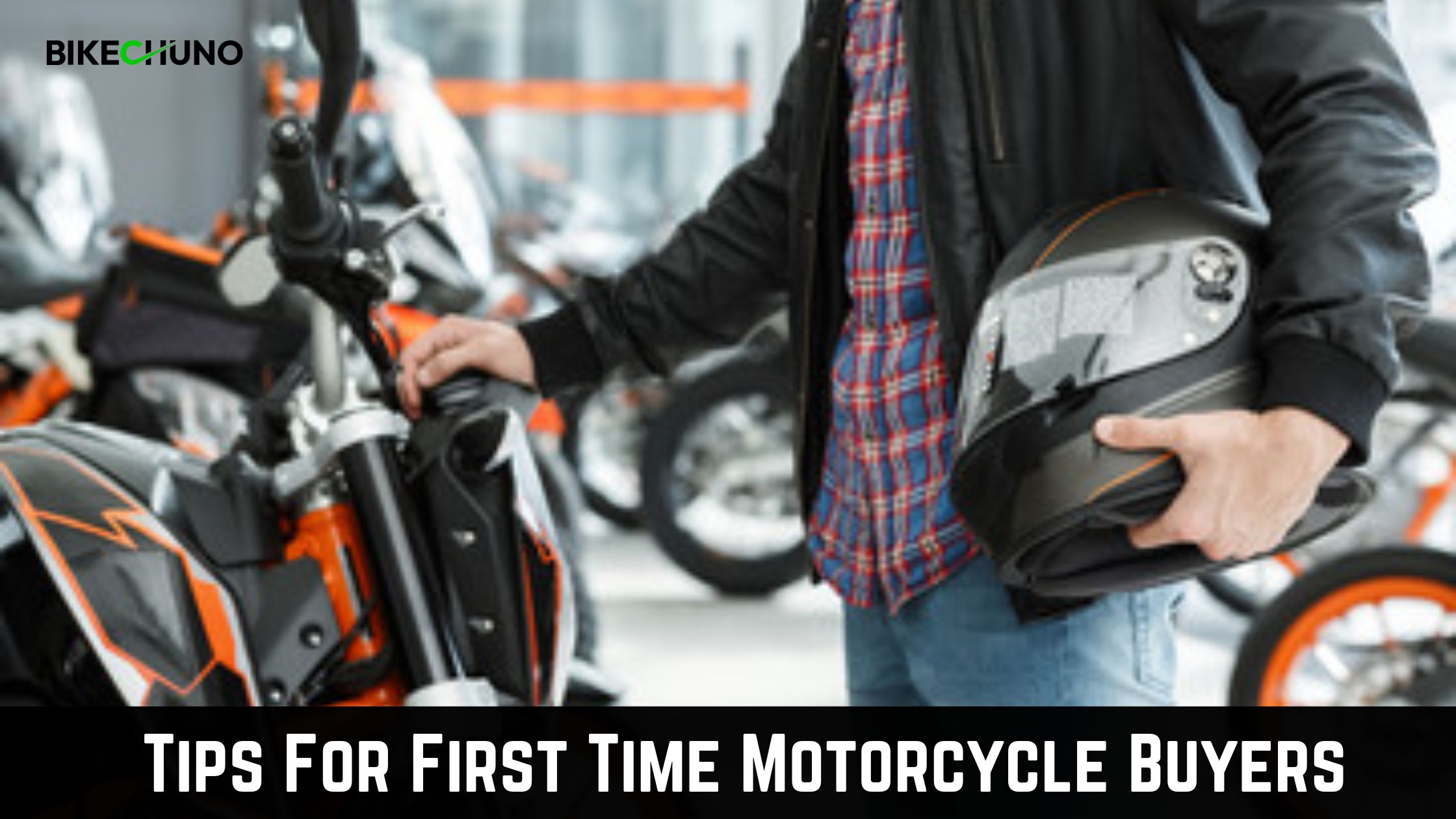
It’s not always simple to figure out what’s wrong when your motorbike won’t start, much less fix it in time for your commute or weekend ride. However, you can take some action if your motorbike won’t start. However, the battery is still okay, rather than calling a professional immediately. It would help if you first made sure the battery is operational. After that, you can assess your bike and possibly make simple repairs to get it back on the road.
How To Assess The Condition Of Your Motorcycle Battery?
You could have a sneaking suspicion that the battery in your motorbike is in fine shape, but you’re not 100% certain. You might need to take a few steps to determine whether the motorcycle battery is the issue if it is unclear from looking at the bike when you turn the key (the lights come on, for example).
Dim running lights, a clicking noise when you turn the key, and a brief crank of the starter, followed by nothing, are signs of a dead battery.
Ascertaining that the battery is functional and supplying the maximum voltage should be your first defense if you don’t notice these indications or are otherwise unclear about what to look for. Check your battery’s visual condition, voltage, and load to ensure it’s still in good condition.
An examination of a battery checks should include:
- Inspect the terminal for damage.
- Check for any misplaced fluid and inspect the battery for leaks.
- Examine the battery box for any dents or cracks.
- Next, if everything appears to be in order, check the voltage. To inspect your battery, you may do it yourself or take it to a nearby shop or auto parts store.
- Additionally, while the digital voltmeter is still connected to the motorcycle, you should load-test the battery.
For around 30 seconds, the voltage reading should be in the 9.5 to 10.5 range. If the reading remains constant, your battery is in fine shape. Still, your motorcycle probably has another issue (or several issues). Thankfully, various methods of troubleshooting can assist in figuring out why your bike won’t start.
What To Do If Your Motorbike Won’t Start But The Battery Is Fine
The bad news is that it may have 10 or more issues if your motorbike won’t start. The good news is that there are a ton of symptoms and warning indications that can assist and guide you toward a solution. Once you’re certain the battery is still functional, you can move on to trying to identify the real issue with less concern.
Generally speaking, the problem could be related to fuel, compression, or sparks. You must identify which is absent and how to replace it to start the bike. Here are 15 things to examine to fix your motorbike.
1. Verify The Tank Is Filled With Gas
Verifying that you have petrol in the tank is a simple pre-trip check, but riders frequently forget to do it. You might not think to check, especially if your petrol gauge indicates the tank is full. Remember that gauges can break down, so before assuming other potential issues, shake your bike and listen for the slosh of gas in the tank.
If you can confirm that there is petrol in your motorbike, check to see if the fuel pump is working (if the motorcycle has one), and if it has a carburetor, check to see if gas is getting to it.
2. Turn On The Clutch
It’s usually a no-brainer for seasoned riders, but for novices, remembering to engage the clutch might be the difference between an enjoyable ride and a trying trip to the mechanic. Even when you are in neutral, many bikes require the clutch to be engaged before they will start.
You can try “pumping” the clutch a few times to see if it resets the clutch switch or if your bike’s clutch switch is damaged. Although the clutch switch can be bypassed, a long-term fix (and possibly a new clutch) is required.
3. SET (THE RIGHT) GEAR ON THE MOTORCYCLE
Depending on the types of motorcycle, you might need to put the gearbox into neutral and engage the clutch to start it. Switching to neutral and applying the clutch can be a helpful troubleshooting step (and spare you any potential embarrassment) if you’re unfamiliar with the bike you’re having difficulties with.
4. CHECK FOR UNSECURED WIRES
Checking electrical connectors to make sure everything is plugged in seems like another obvious step. Riders frequently miss electrical issues since they aren’t always evident. However, carefully looking at the connectors can help you spot an issue that otherwise wouldn’t be noticeable.
It’s also worthwhile checking your battery connector wires if you think something other than the battery is to blame, particularly if you recently replaced it. Suppose your new battery’s wiring is defective. In that case, you may be able to fix the problem by tightening the connections to the terminals.
5. VERIFY THAT THE KILL SWITCH IS NOT ON
Even though not every rider regularly uses their kill switch, if you previously did, the engine cutoff switch is likely still engaged. It’s worth a glance to rule out other possibilities, such as someone else flicking the switch or an accident on your part. If the switch is still in the on position, the motorcycle won’t start.
6. MAKE SURE THE FUEL VALVE IS TURNED TO THE “ON” POSITION
A fuel valve motorbike (a non-fuel-injected model) can have trouble starting if the setting is off. Wait a few seconds for the carburetor float bowls to fill after ensuring the fuel valve is in the “on” position.
7. CHECK THE FUNCTIONALITY OF THE FUEL INJECTION SYSTEM
It can be difficult to tell whether your bike is experiencing injector problems or another issue because fuel injection systems are complex. Experts advise that a pump failure is likely because fuel injector failure is unusual.
If you try to start the bike, listen to see if you can hear the pump functioning; if not, check the pump fuse. In addition to these basic investigations, you’ll probably need to consult a specialist to determine whether the FI system is to blame.
8. CHECK THE CONDITION OF THE SPARK PLUGS
Another simple to check the probable solution for bikes that won’t start is the spark plug. Like other vehicles, faulty spark plugs can cause a loss of power, poor gas mileage, engine misfiring, difficult starting, and delayed throttle response.
Onboard sensors may also be a factor in spark plug issues. Still, since spark plugs are often straightforward to remove, this is a quick way to identify the issue with your motorcycle. Check each one to determine if it is wet; clean it off, put it back, and test the bike’s starting ability. You should also include checking the spark plugs in your routine maintenance to keep your bike in good working order and to preserve its worth.
9. CHECK TO SEE IF THE PETCOCK IS CLOGGED
A clogged petcock is one potential problem preventing your motorcycle from starting. An engine fuel control valve is a petcock. It regulates the gas flow between the positions of off, on, and reserve. Riders frequently complain about clogged petcocks on forums.
The petcock has a small screen that helps keep debris out, but flow may be hampered by corrosion and stray material fragments. A small amount of petcock rattling can help remove any clogs. Still, replacement or intensive cleaning may be needed to get your bike working properly again.
10. A LOOKOUT FOR BLOWN FUSES
Motorcycles have fuses, like cars or trucks, and can blow like in any other petrol vehicle. Keeping a fuse kit on hand is beneficial so that you may swap out any blown fuses for ones with the same amperage. Suppose fuses continue to blow even after you replace them. In that case, there is unquestionably a more serious electrical issue with your bike’s wiring. This is especially relevant for petrol bikes in India, where maintenance and quick fixes can ensure a smooth and reliable riding experience.
11. EXAMINE THE VACUUM LINE FOR ANY DAMAGE
Additionally, the system cannot operate correctly if the link that connects the petcock to the engine is damaged. You might be able to reseal the line if it leaks due to cracking, rot, or road damage, or you might need a replacement before you can resume driving.
12. PUT THE SIDE AND STAND UP
When the side stand is down, certain new (and some older) motorcycles may not start. Your motorcycle may contain an internal code that prevents the ignition from starting if your kickstand is engaged, in addition to all the other sophisticated sensors installed.
If your bike includes a sensor for the side stand, examine if it’s functioning properly. If you put the stand-up and the bike still won’t start, look at the switch down there. The bike can “think” you have to stand down when you don’t if it isn’t.
13. OPEN THE EXHAUST PIPE
Someone (or something) may have compromised your exhaust pipes, including your kids, grandchildren, neighbors, or even rodents. This is extremely usual if the bike has been outdoors or in storage for a while.
Suppose your bike has been sitting for some time. In that case, rodents looking for an accessible home may relocate into your silencer. Still, it’s also possible that there is a tonne of garbage there. Check to see if gently clearing it out will help the bike start.
14. PROPERLY ADJUST THE CHOKE
You may need to adjust the choke or mixture enricher on motorcycles with carburetors to fit the engine and ambient temperatures. Another frequent error might occur when the weather is particularly bad, or the situation suddenly changes, and you weren’t expecting it.
15. CONSIDER PREVIOUS MAINTENANCE
Regardless of whether you rode your 125-150cc bikes in India yesterday or it has been in storage for months, do you recall the last time you had it serviced? You may have washed your bike, which could have led to water getting into unfavorable spots. Look for any areas where water may have entered your bicycle or where it may have harmed the electrical components, knobs, or other elements.
It’s recommended to check the motorcycle carefully for any difficult knobs or adjustments, as you may need some WD-40 to loosen up tight switches and dials on bikes that have just been taken out of storage.
CONCLUSION
It’s frequent enough to tick a few items off your pre-trip list to kick-start a challenging ride. Other times, you’ll need a complete overhaul and a professional’s help before you can start driving again. In either scenario, following these instructions will assist you in locating the issue and setting up the required remedies.



